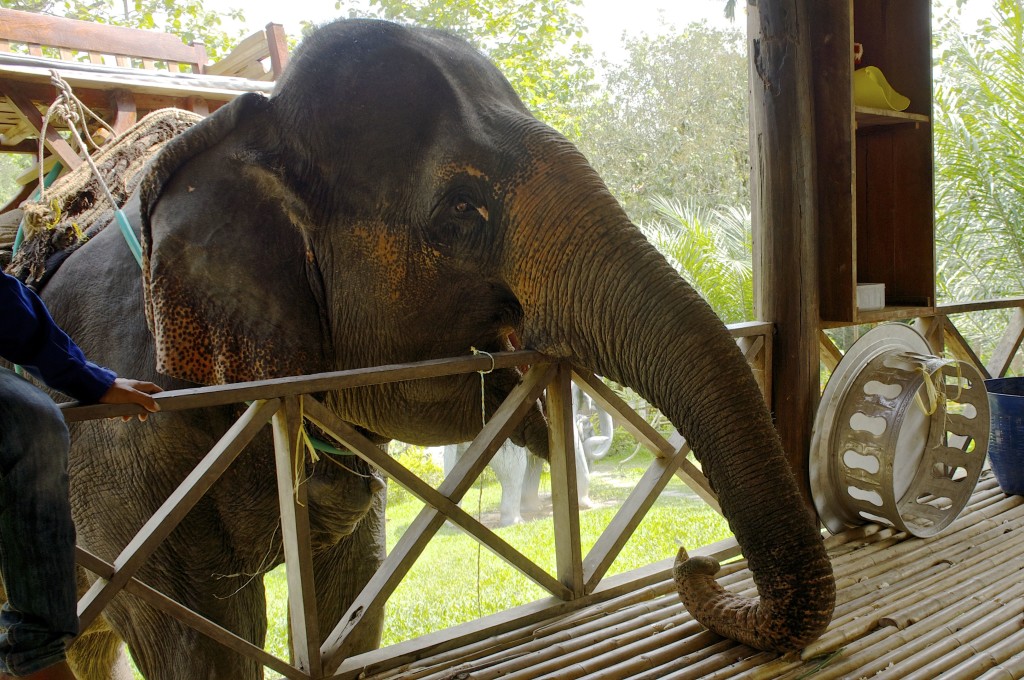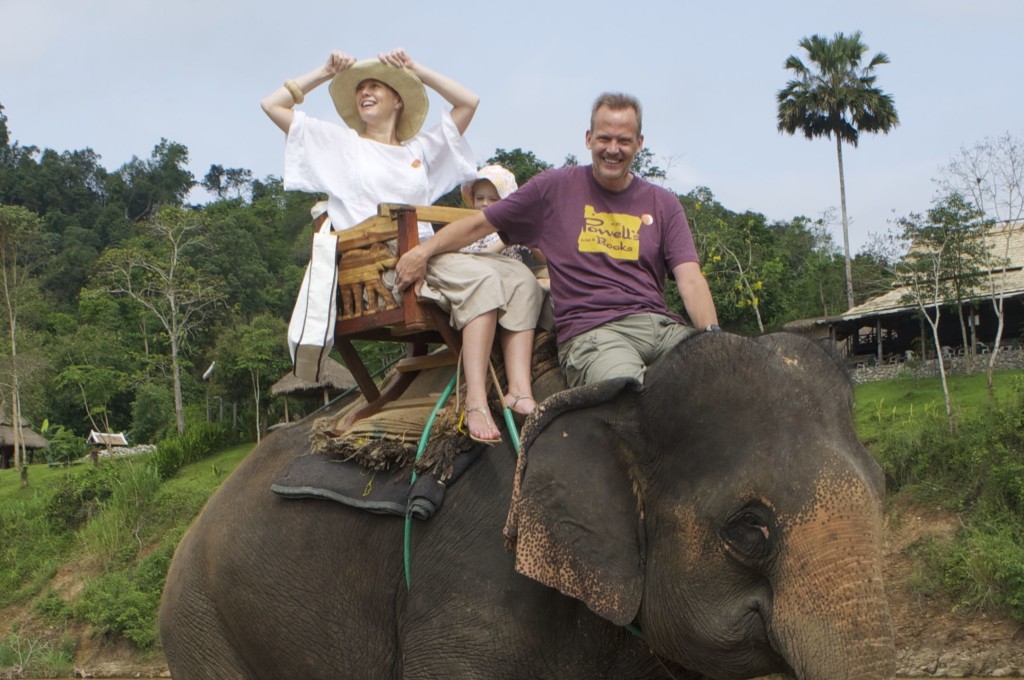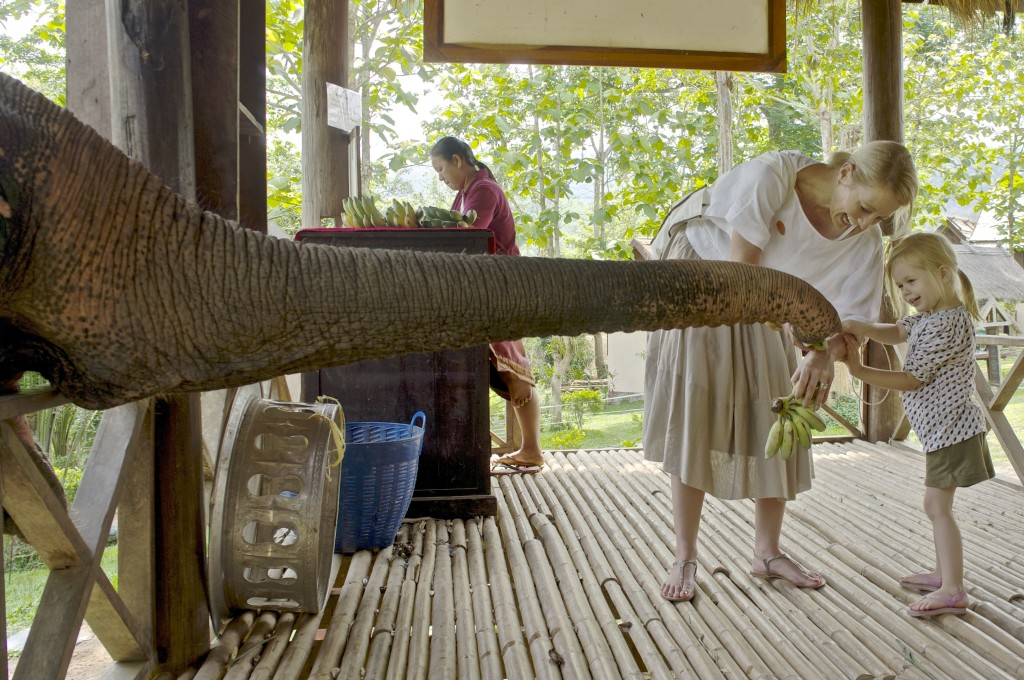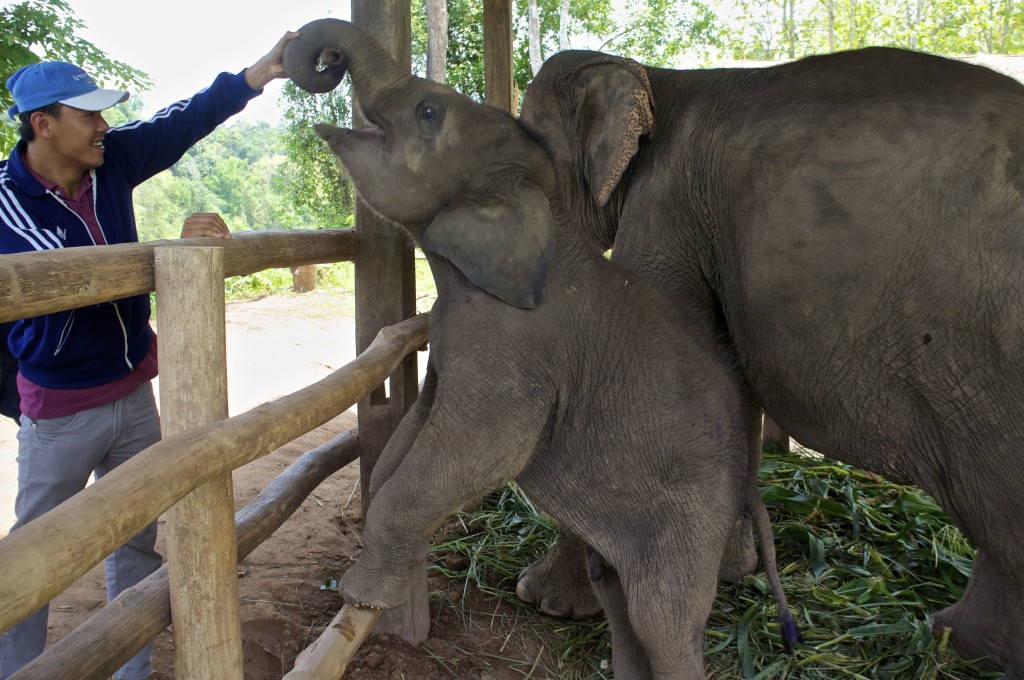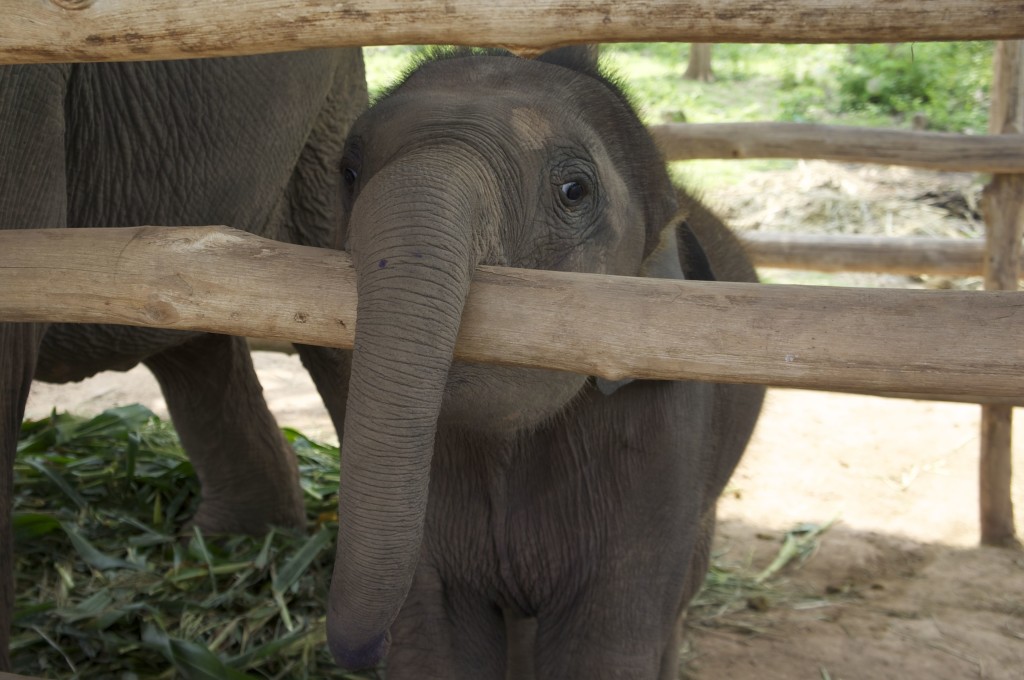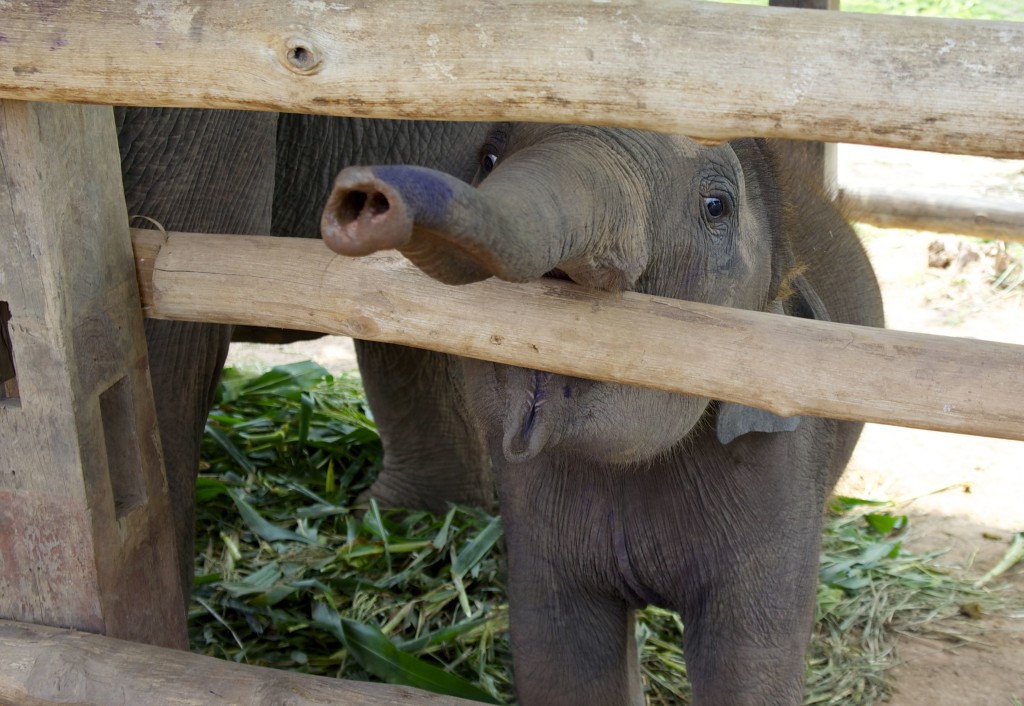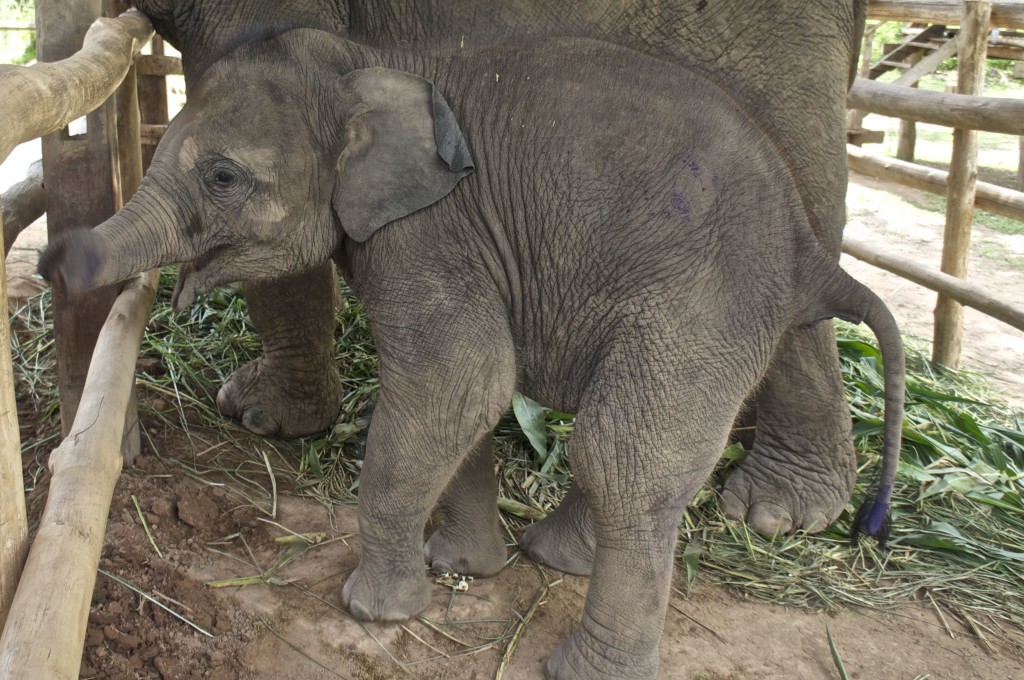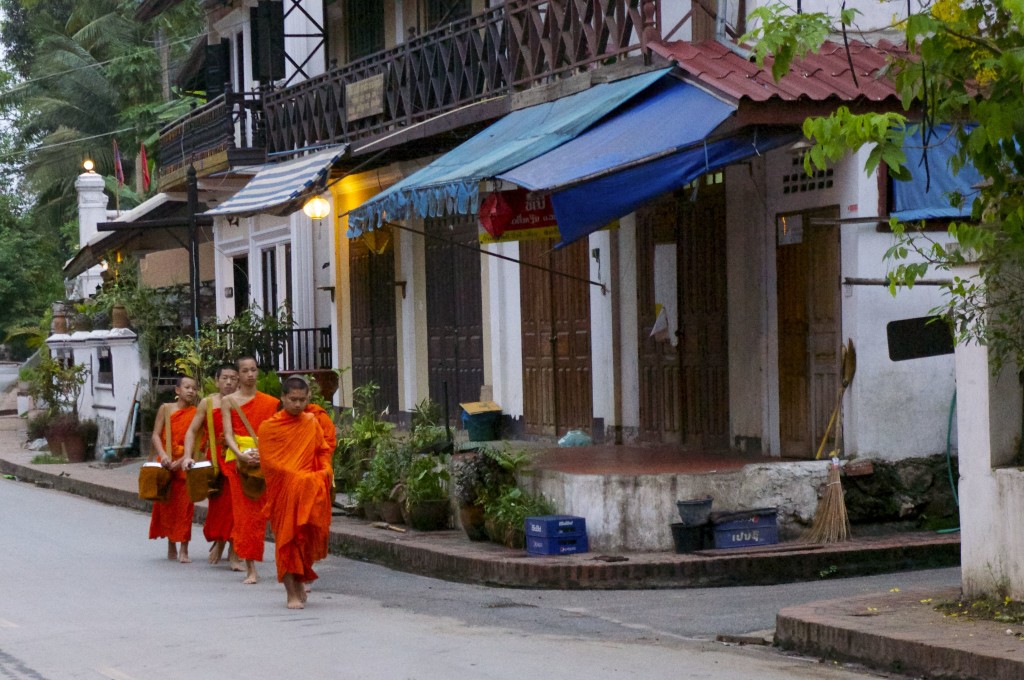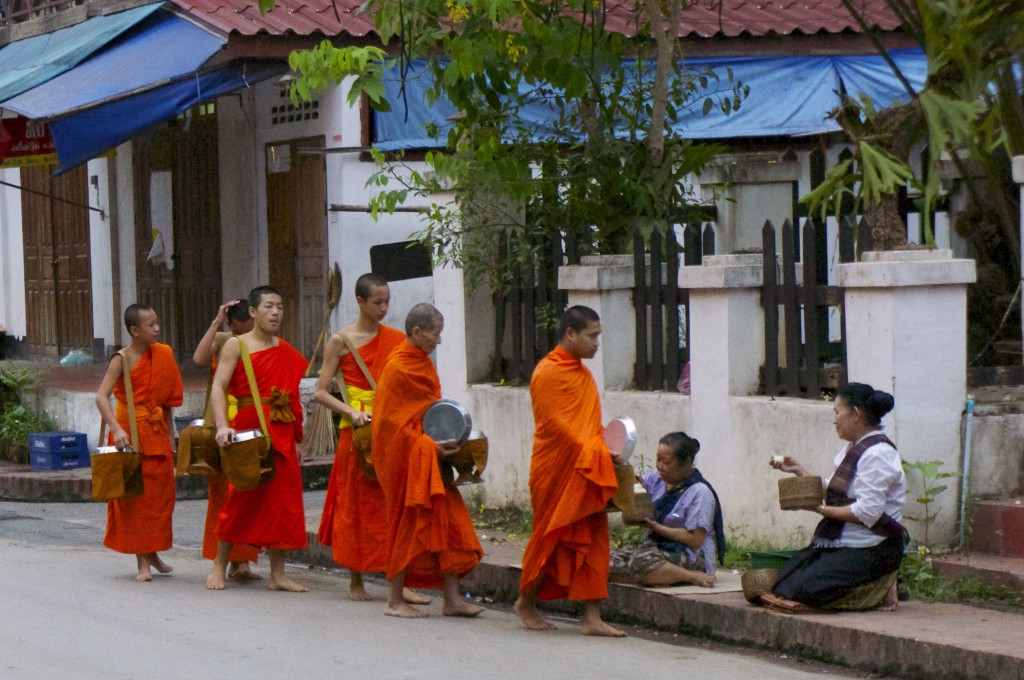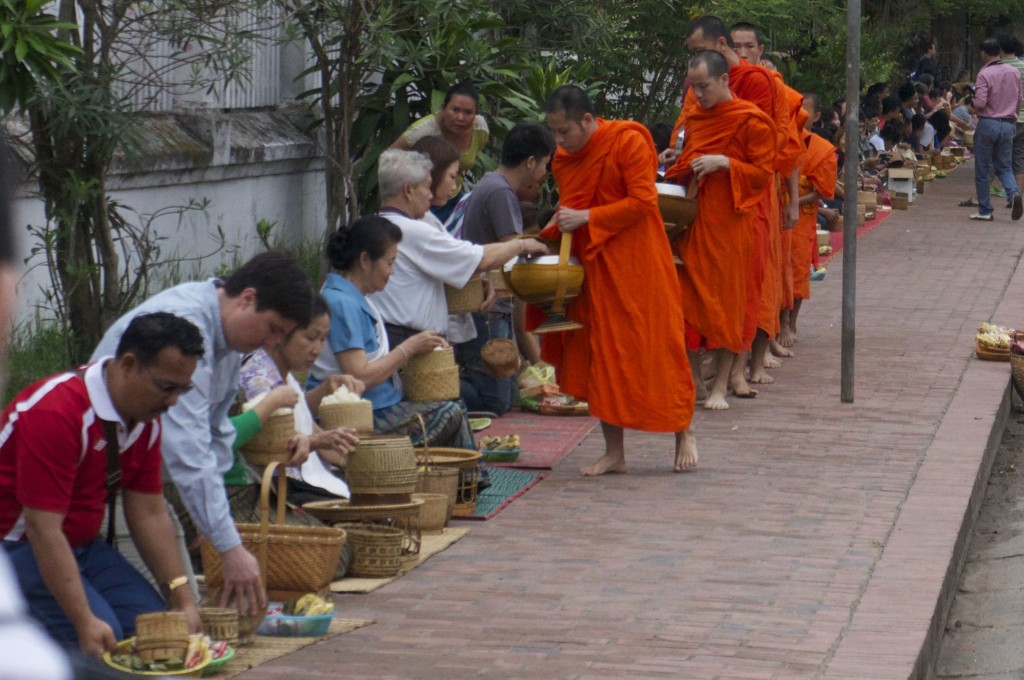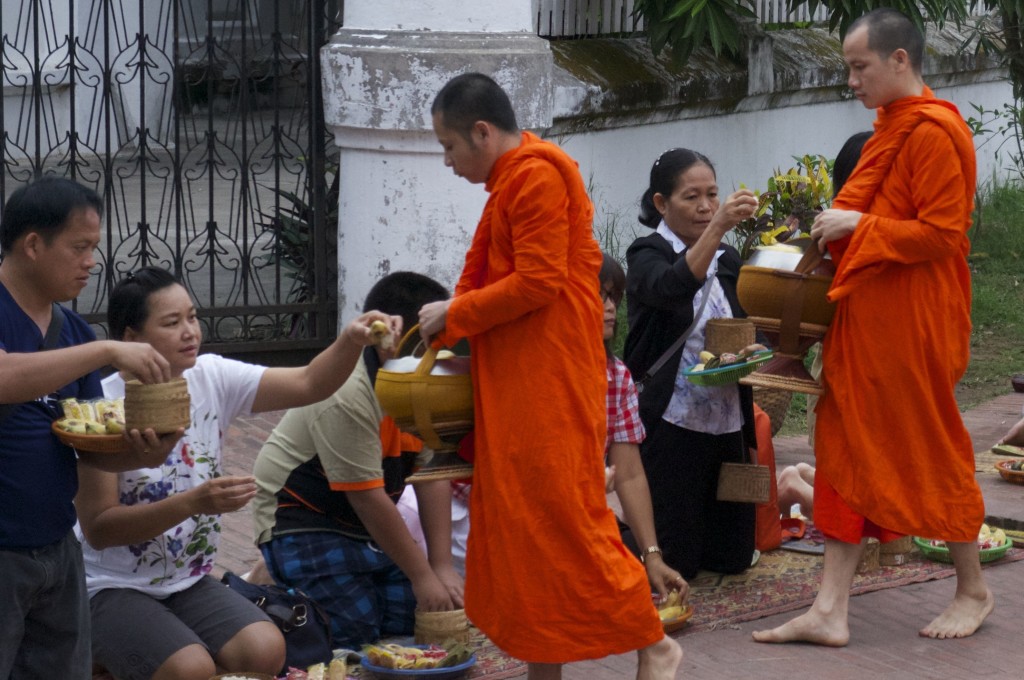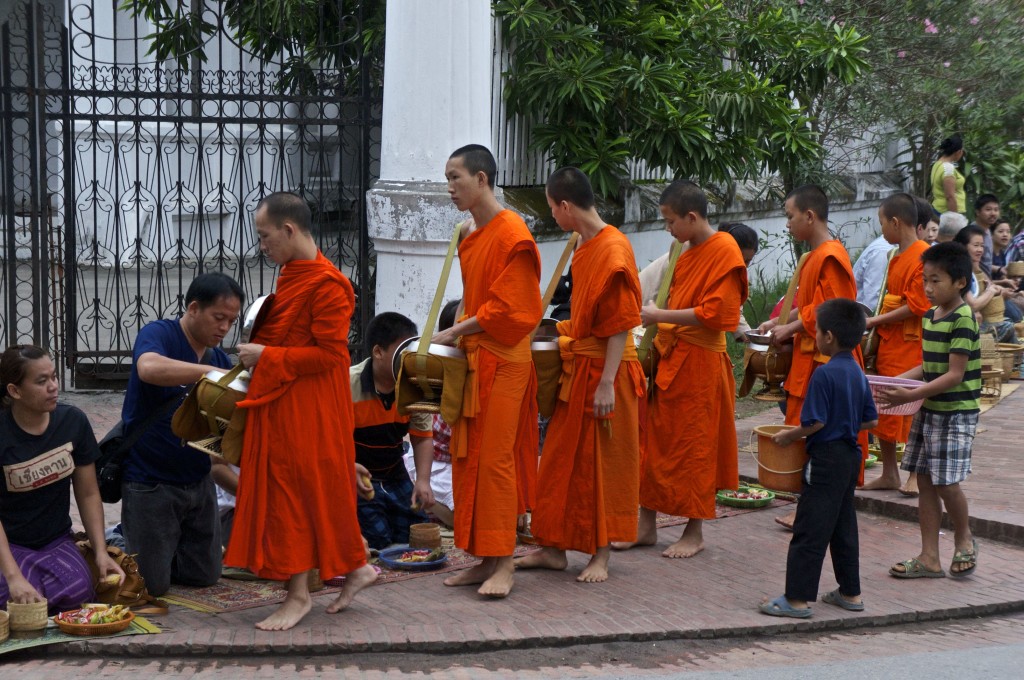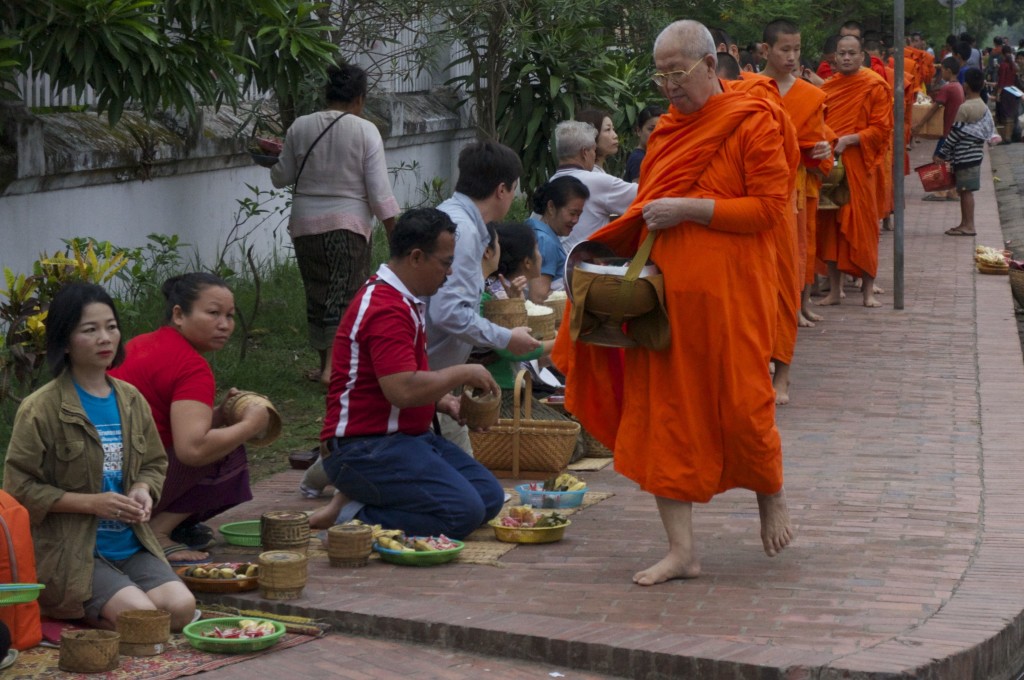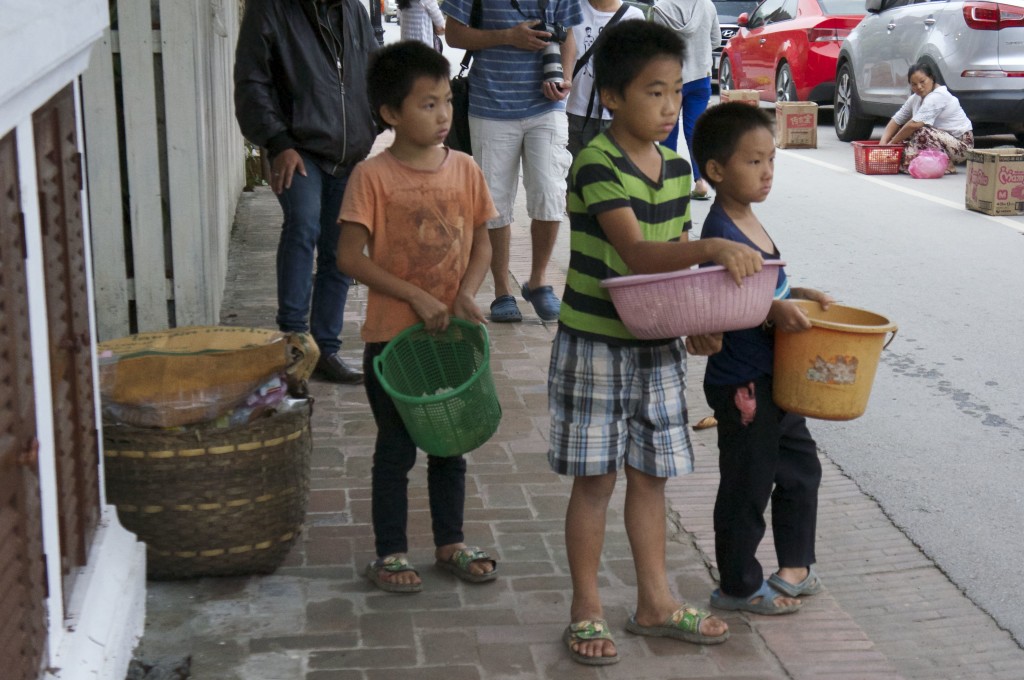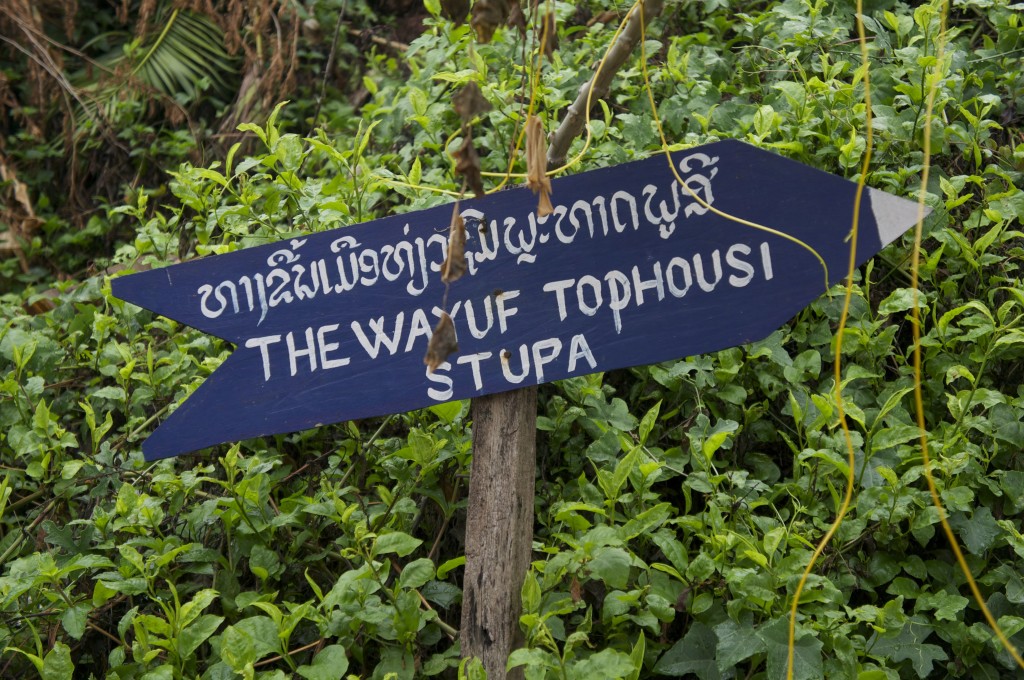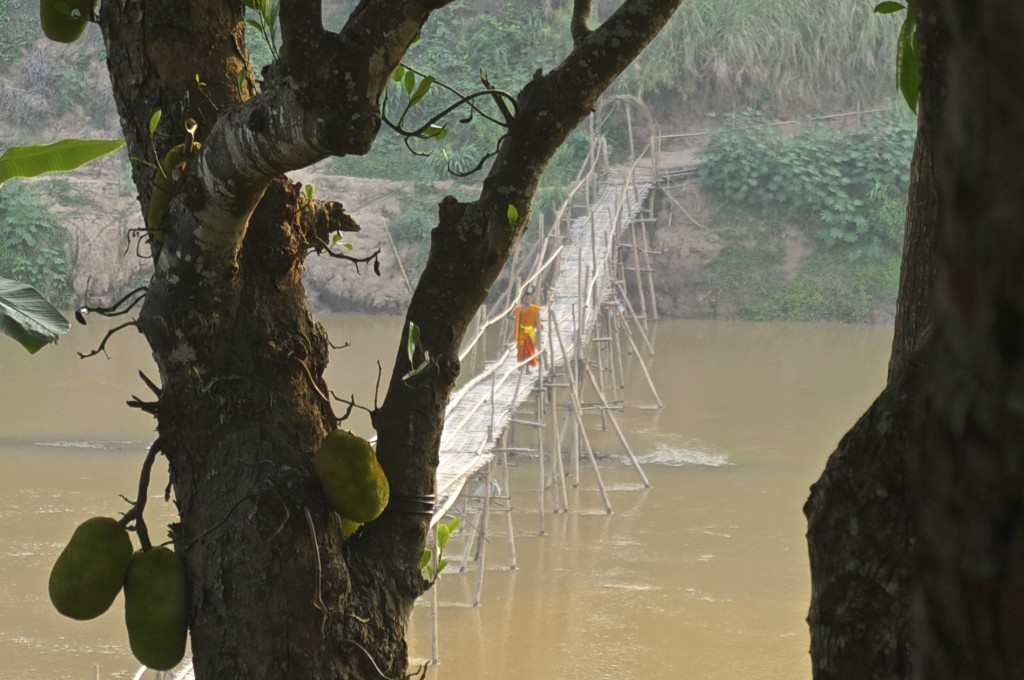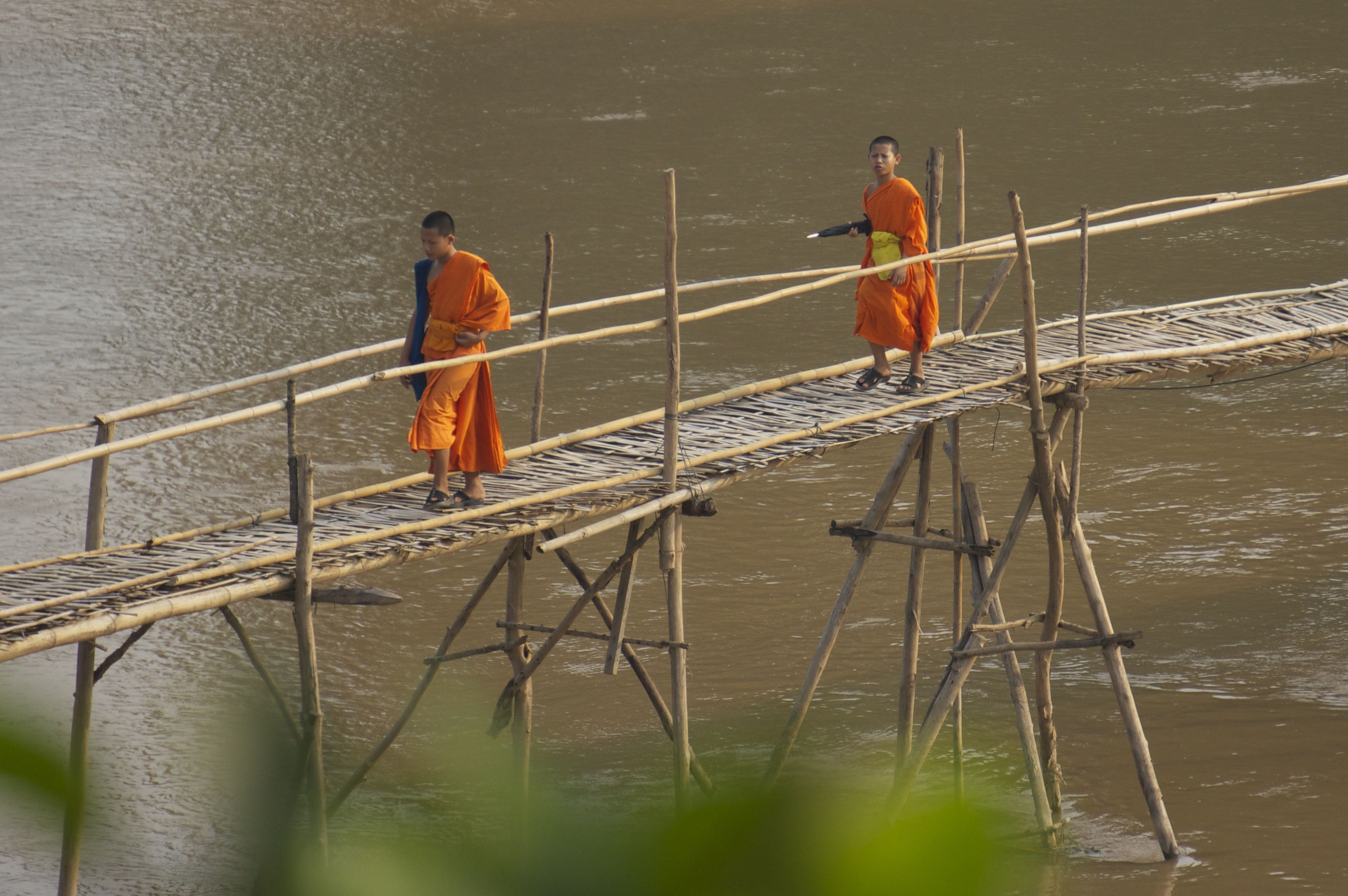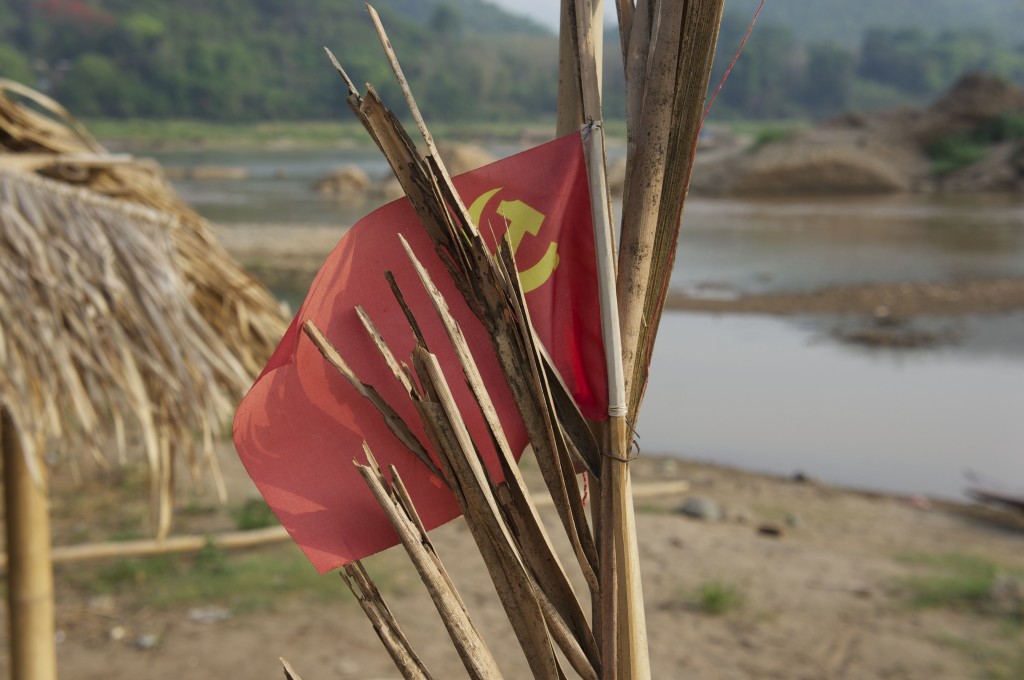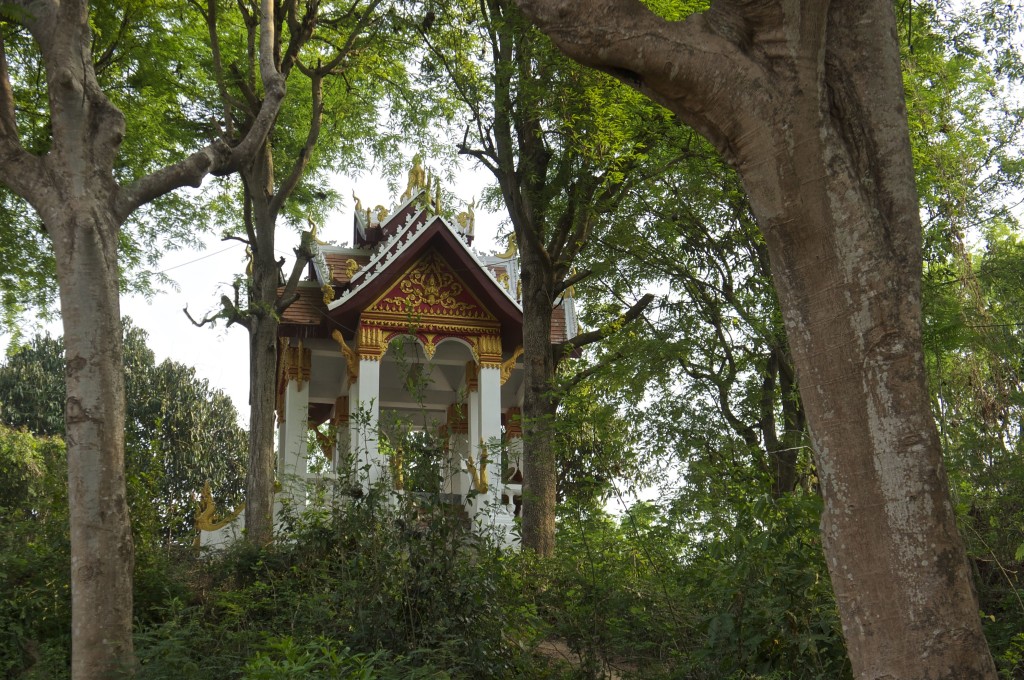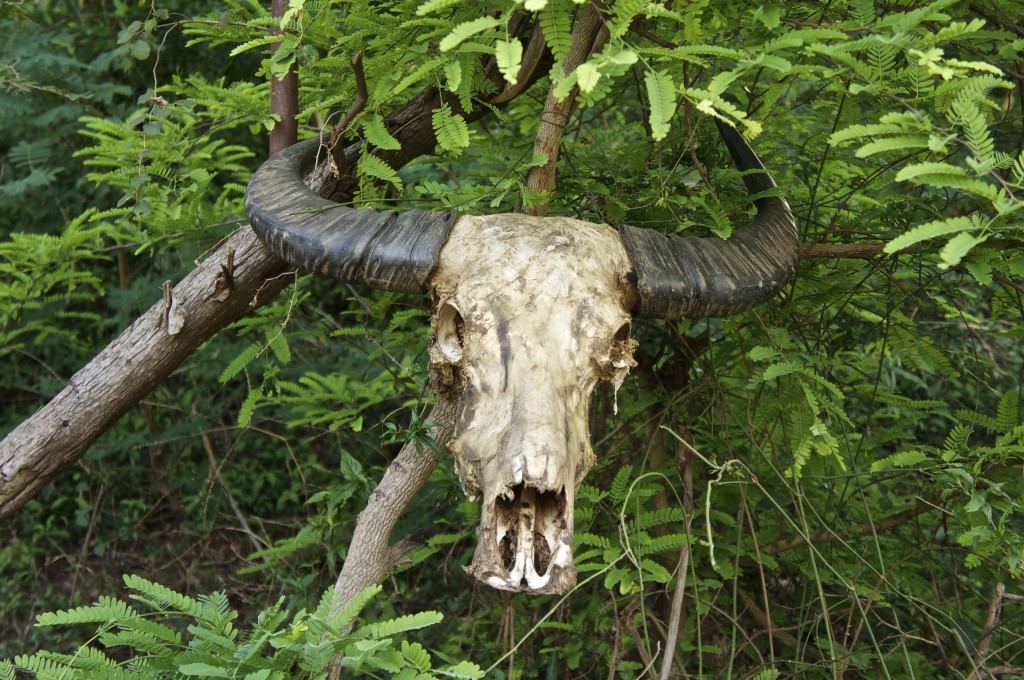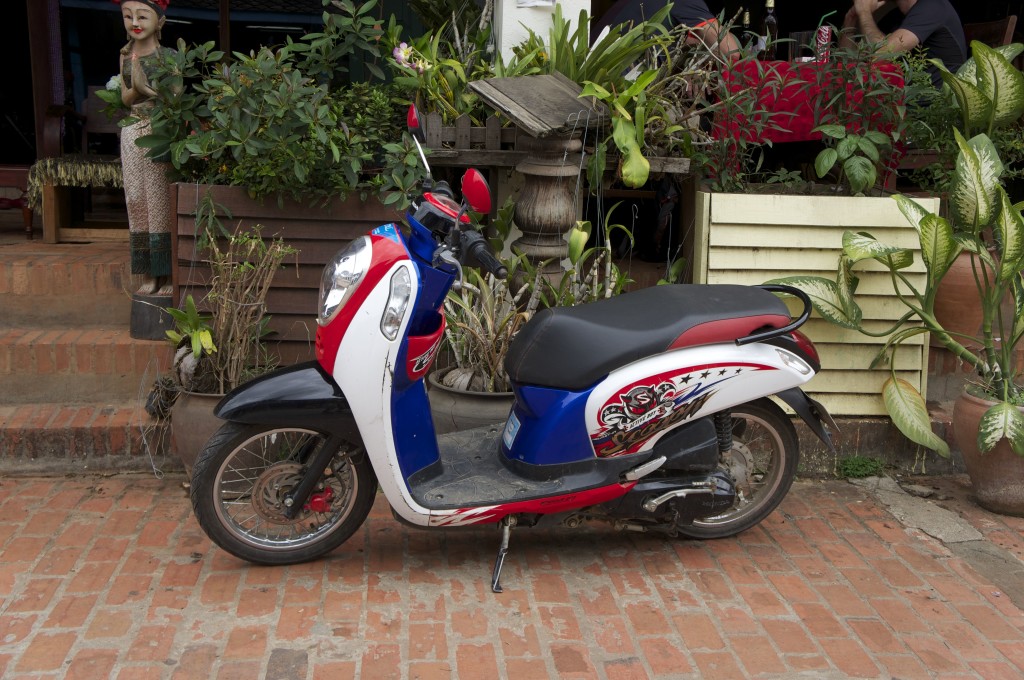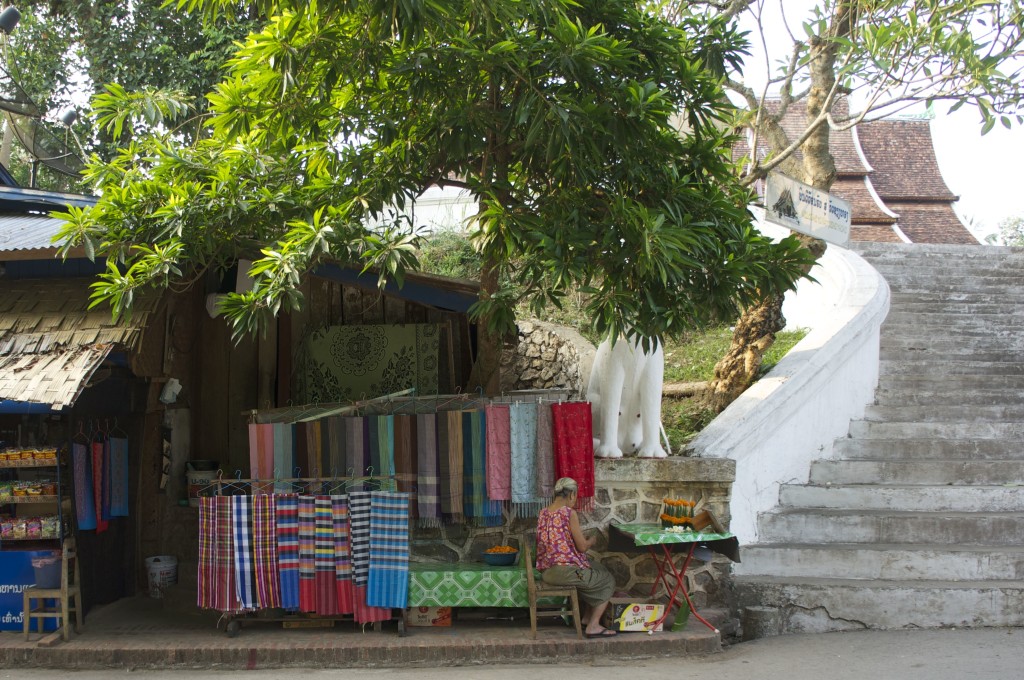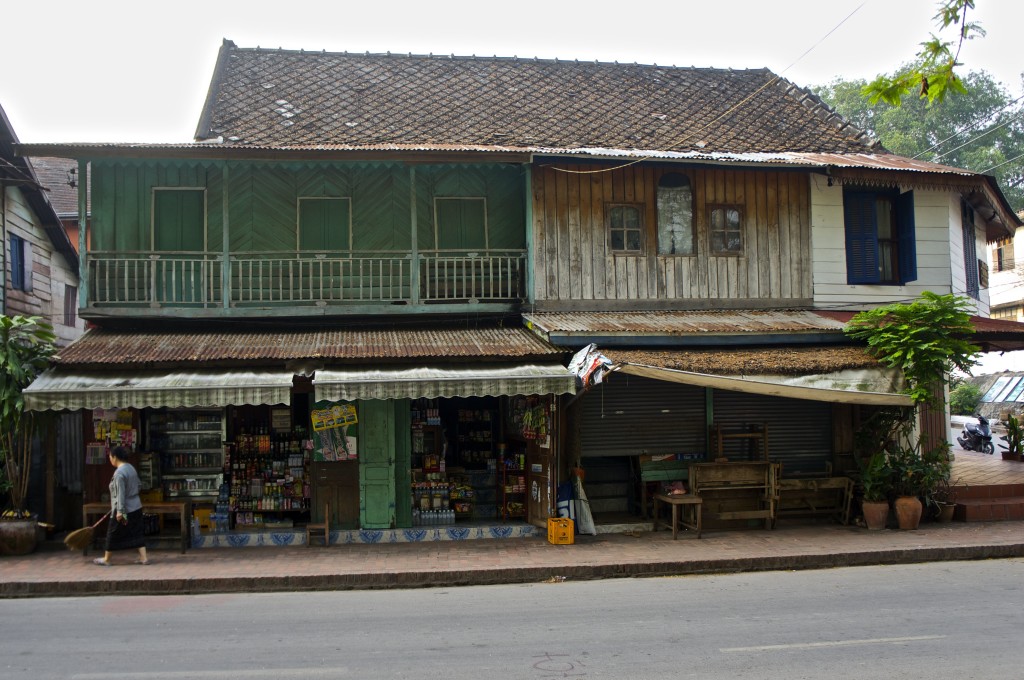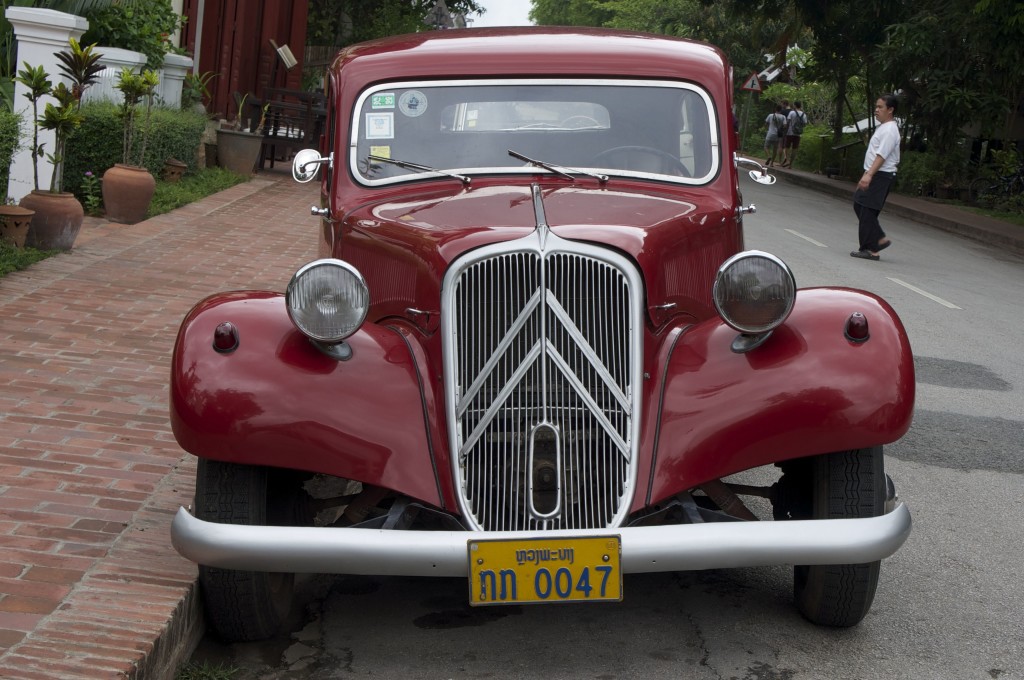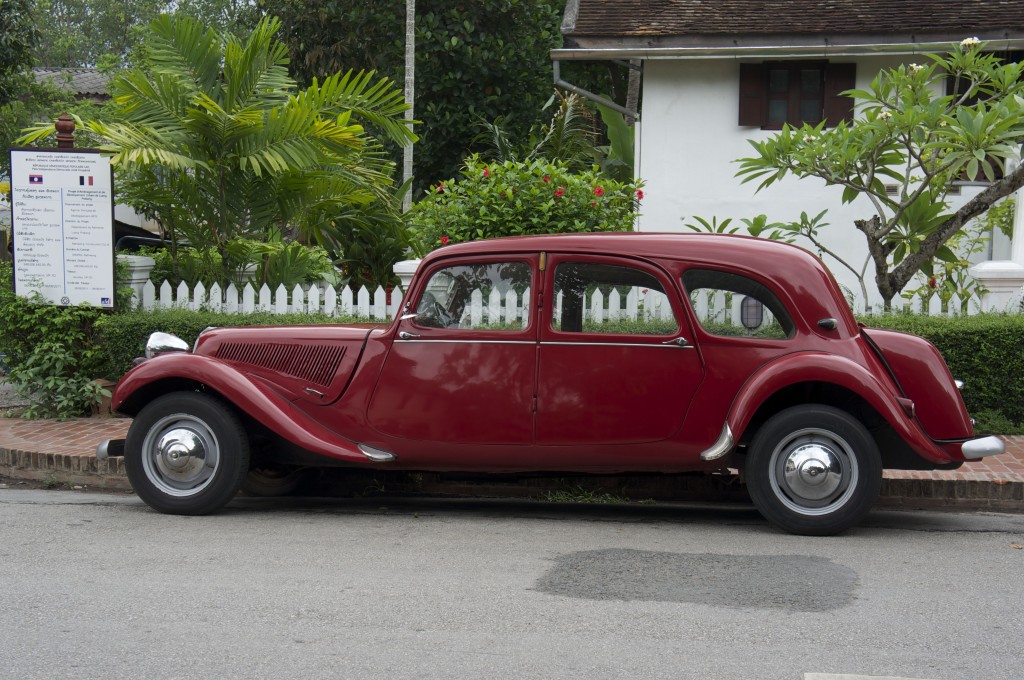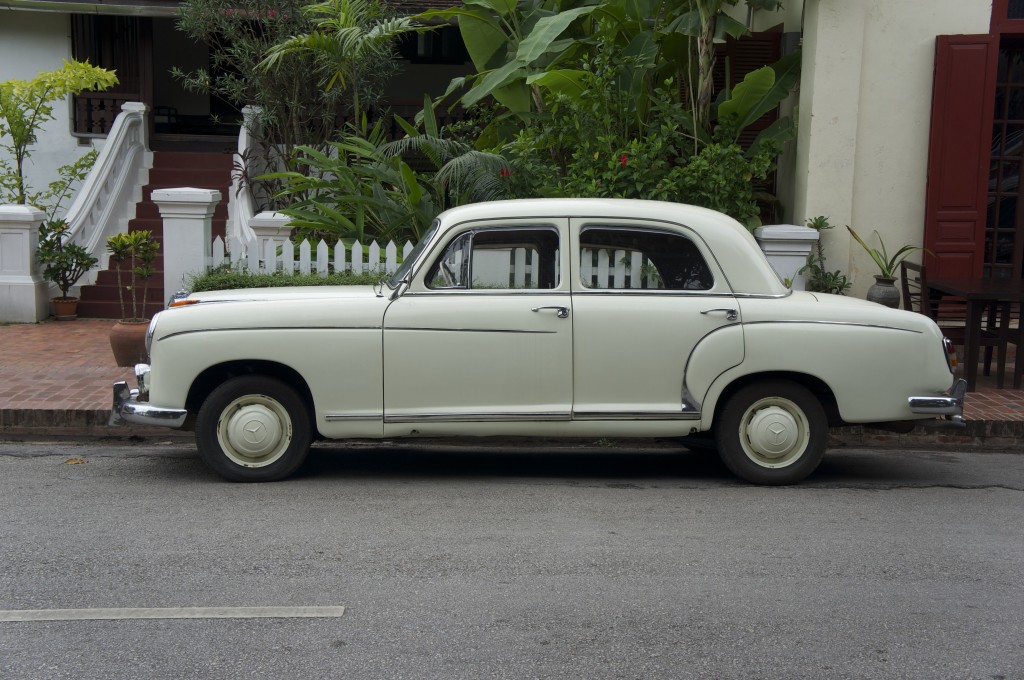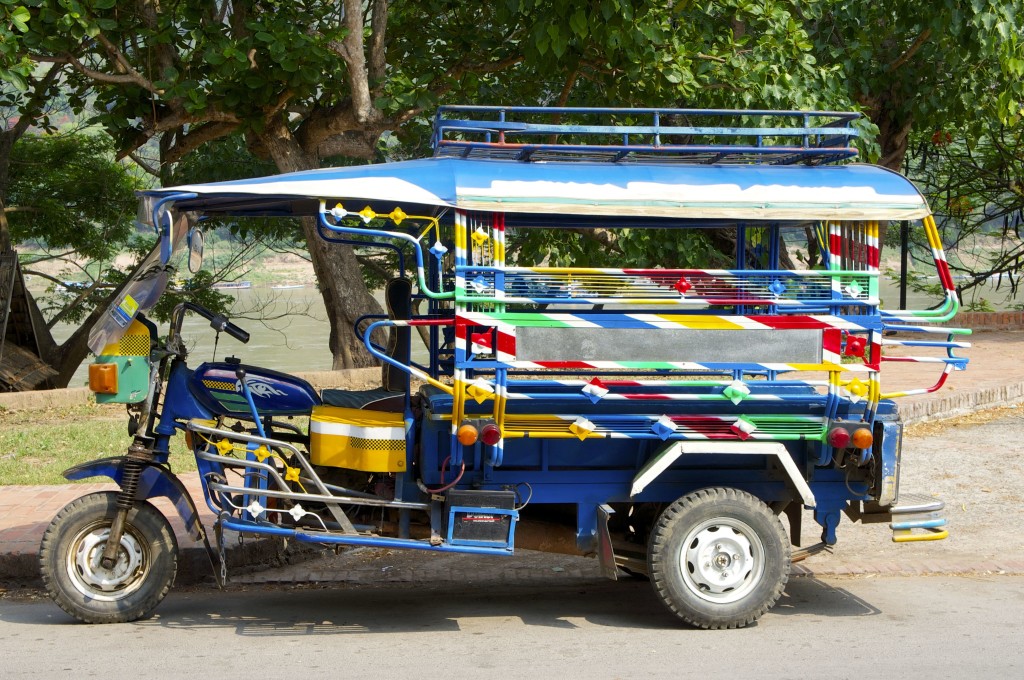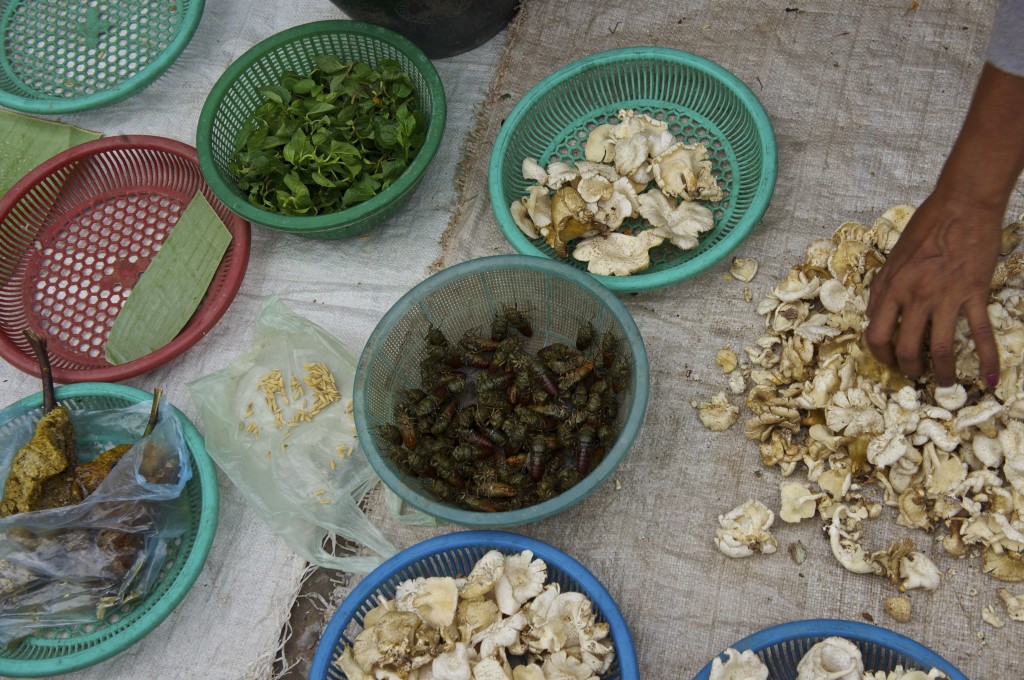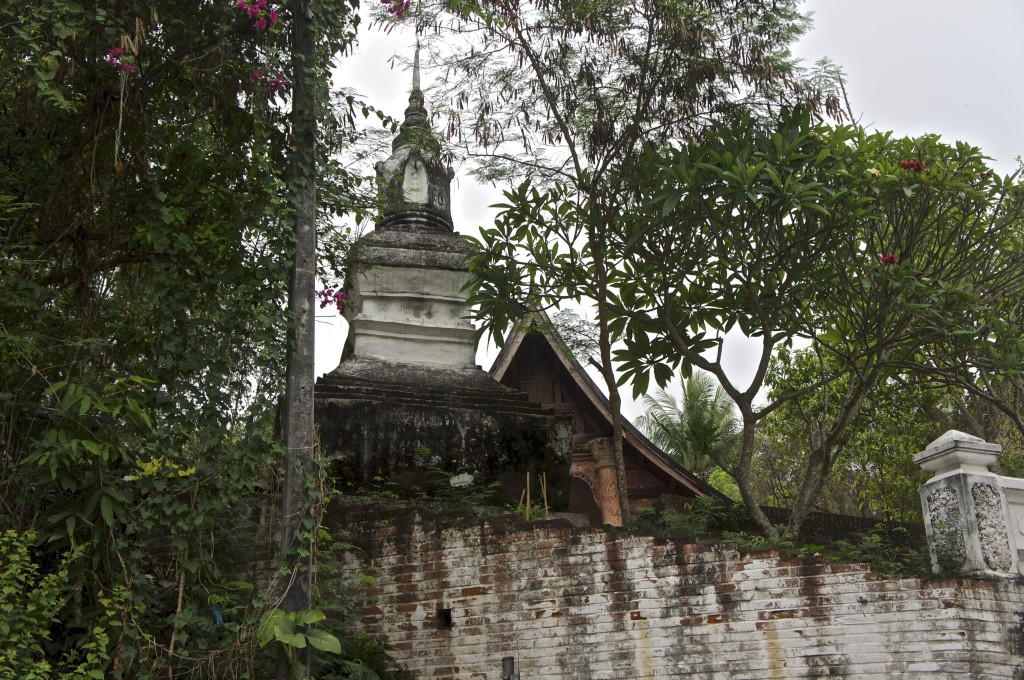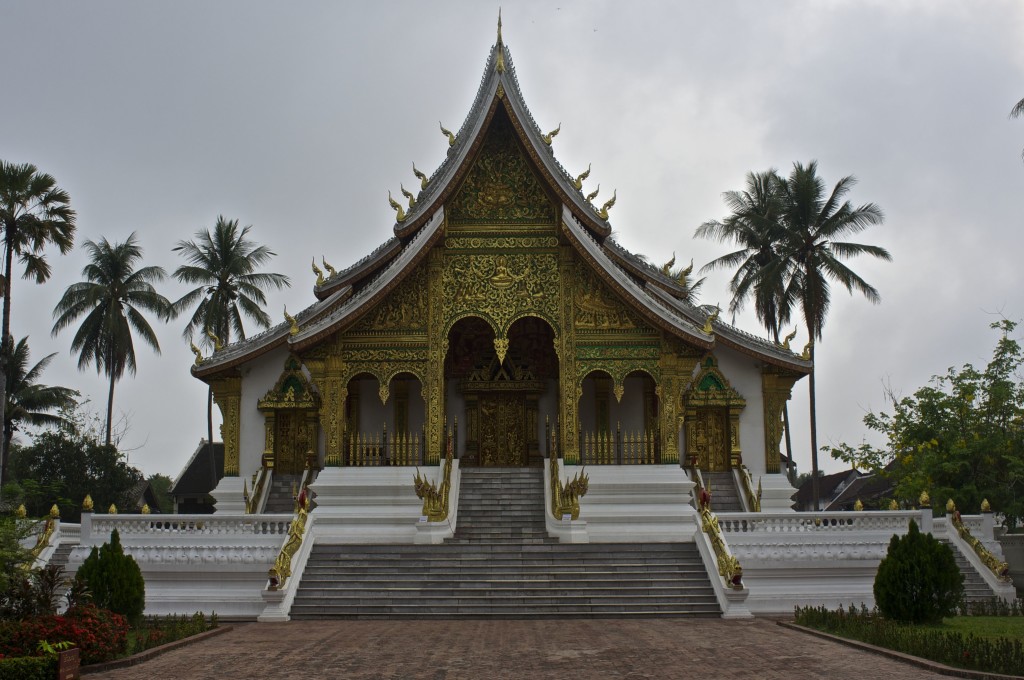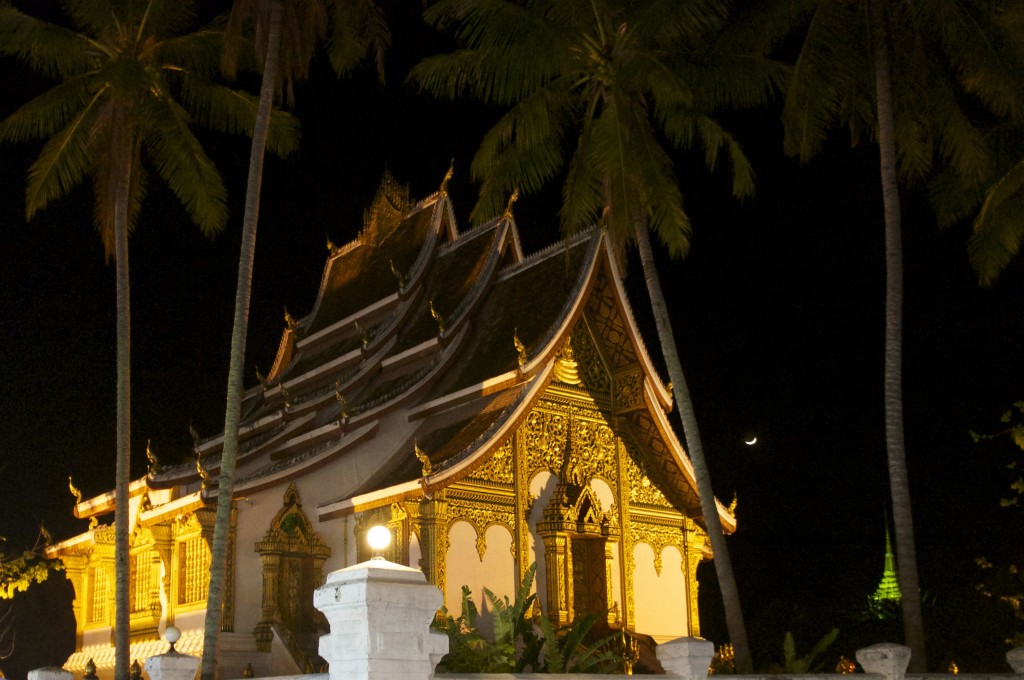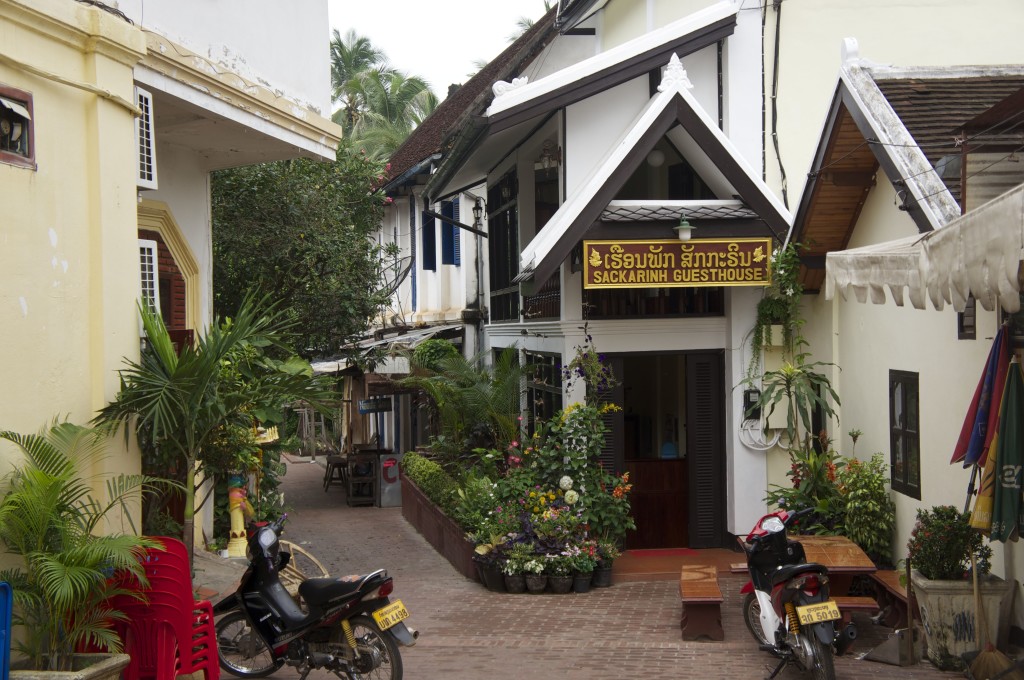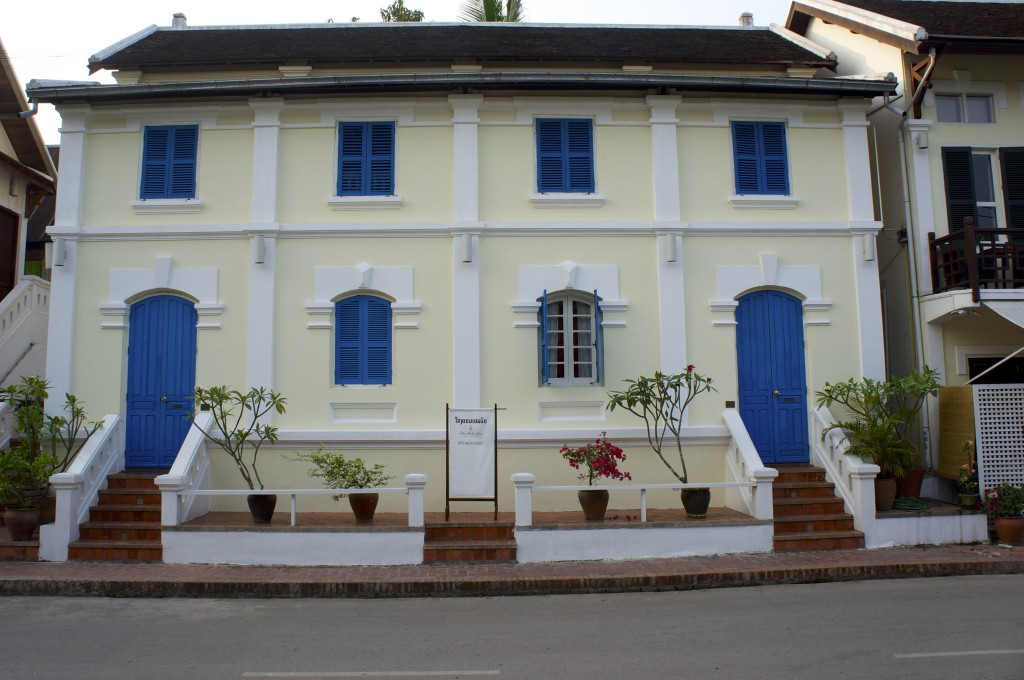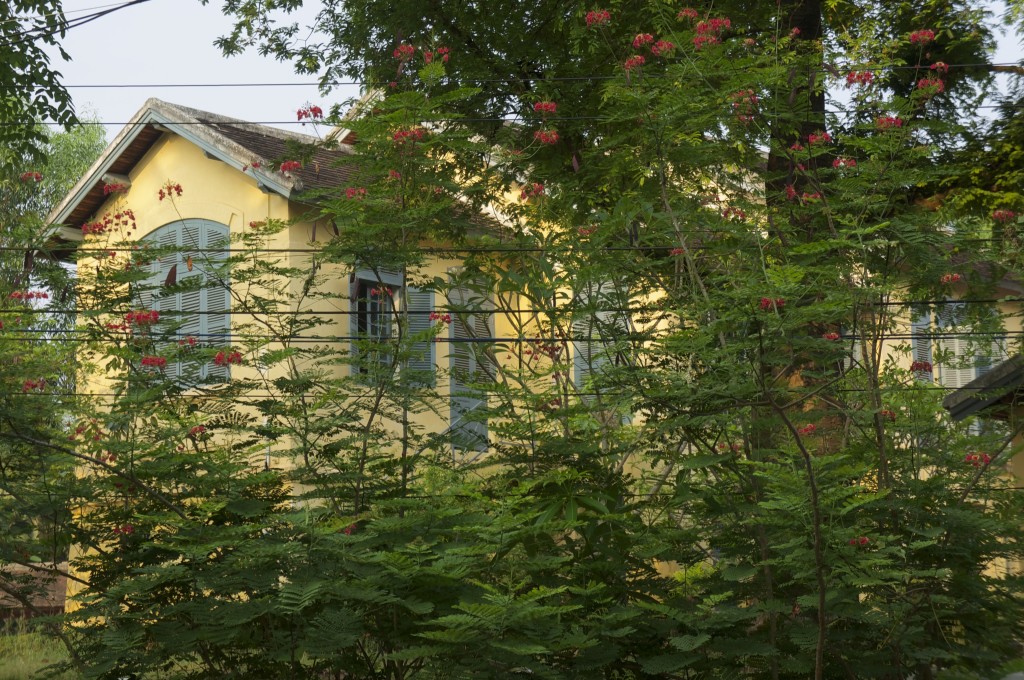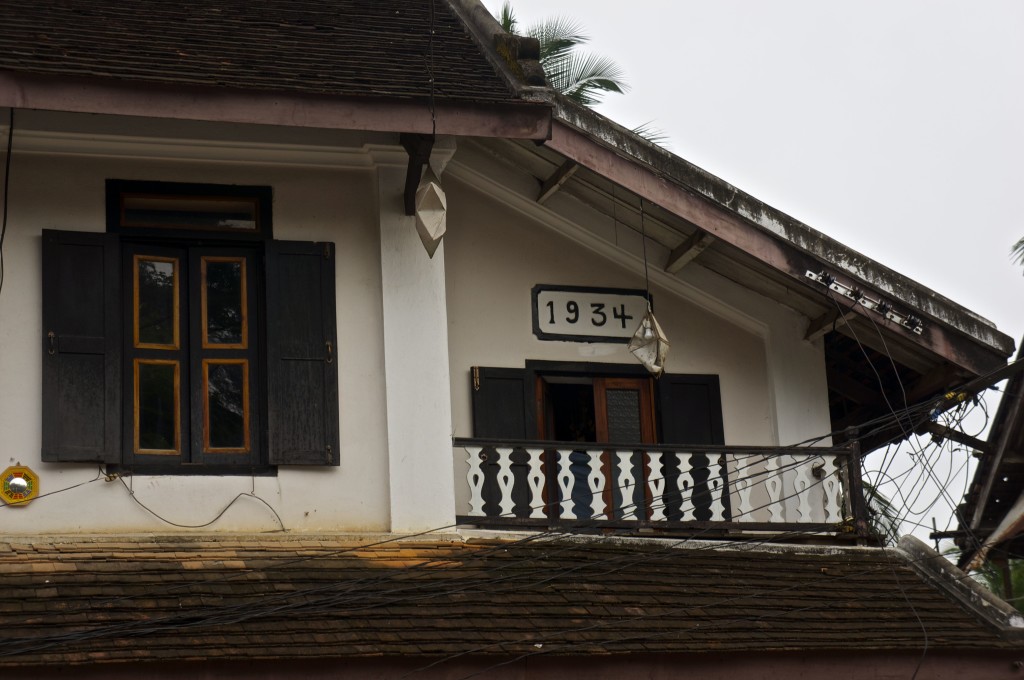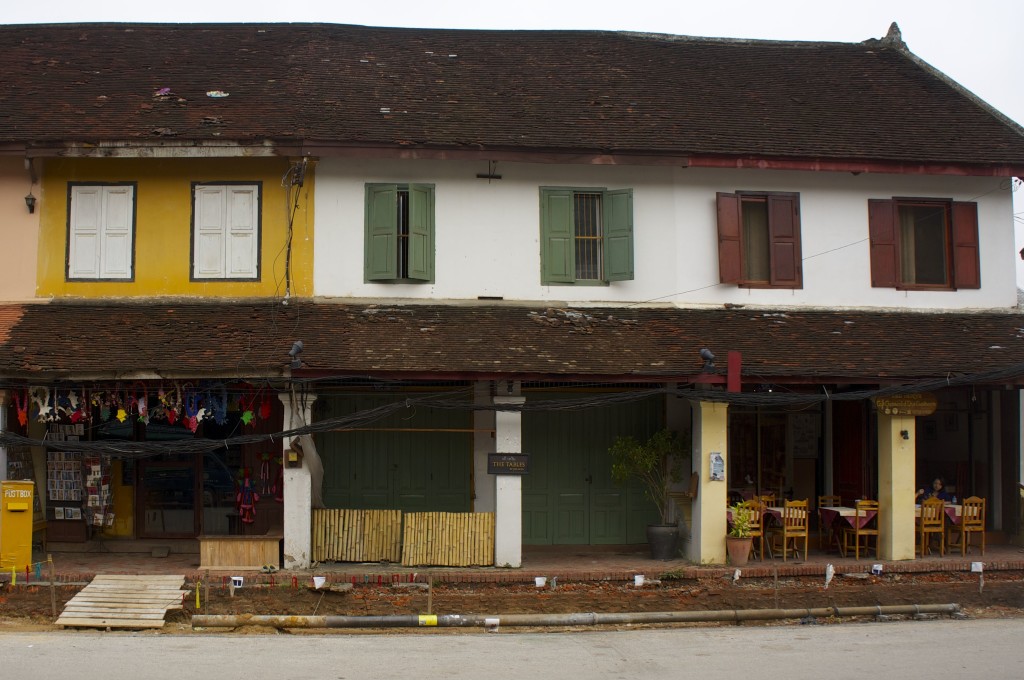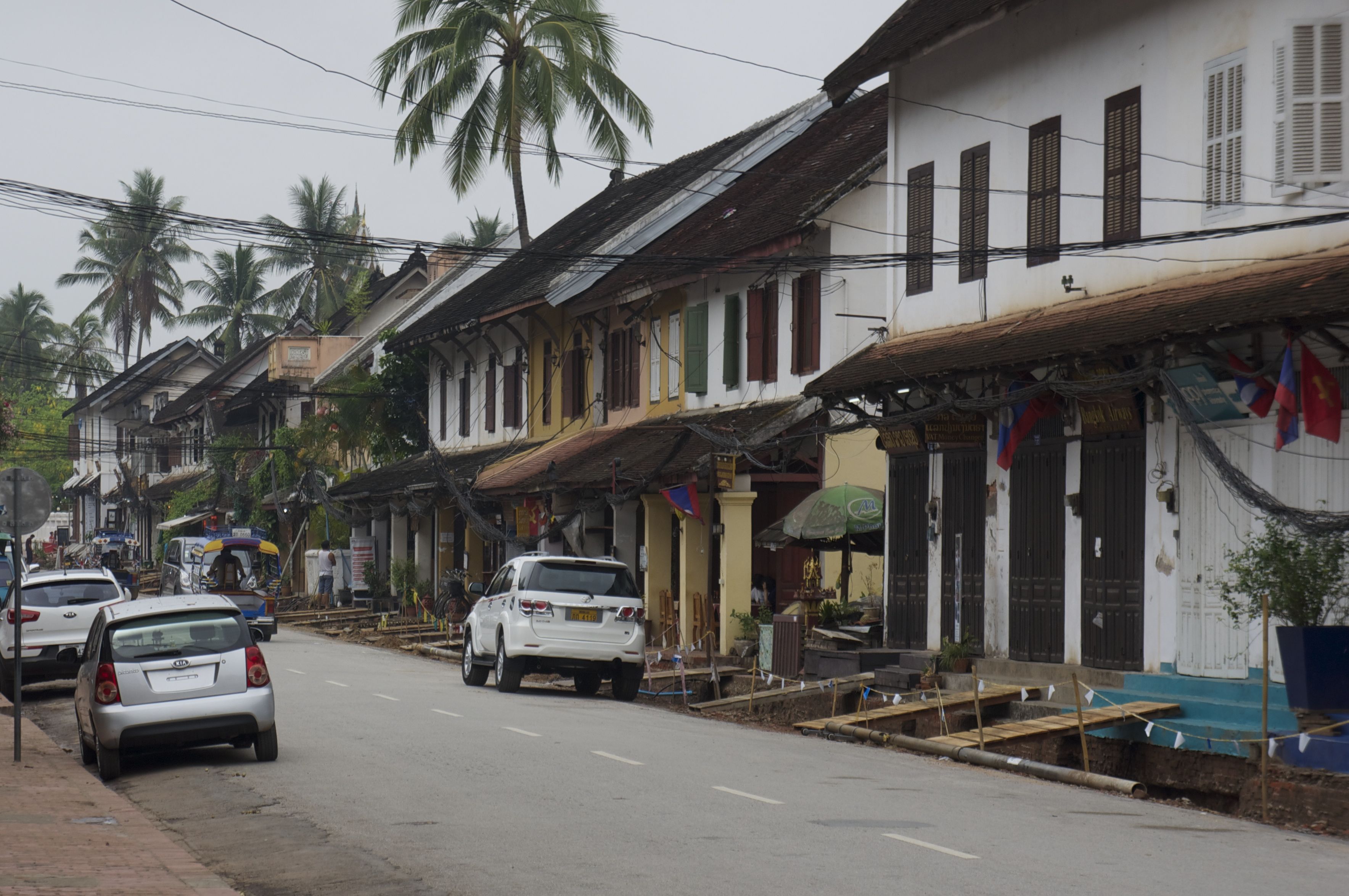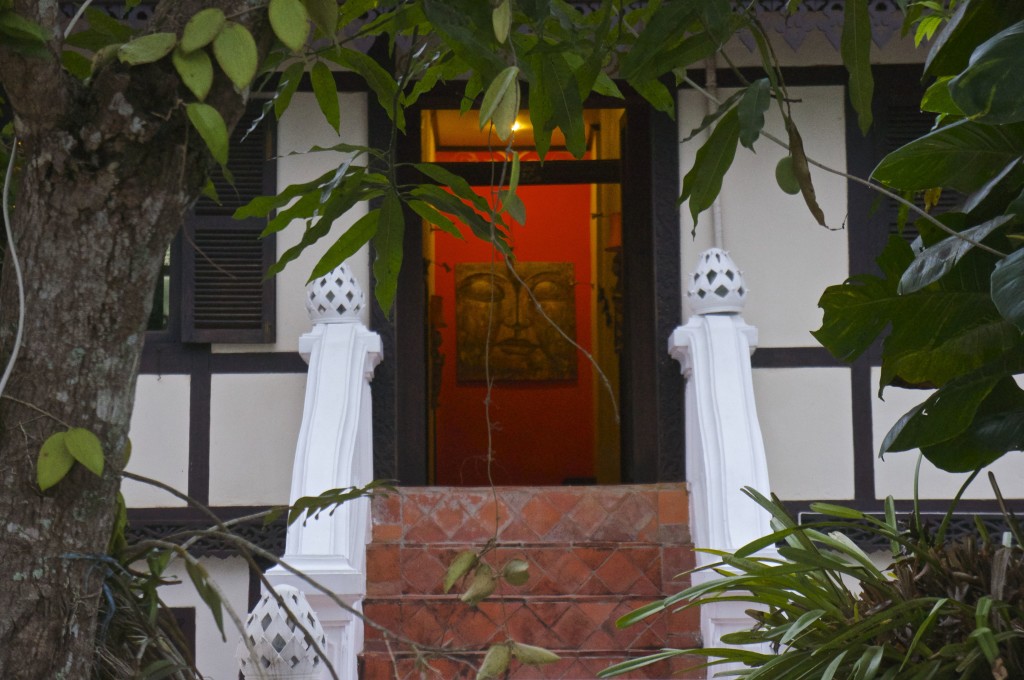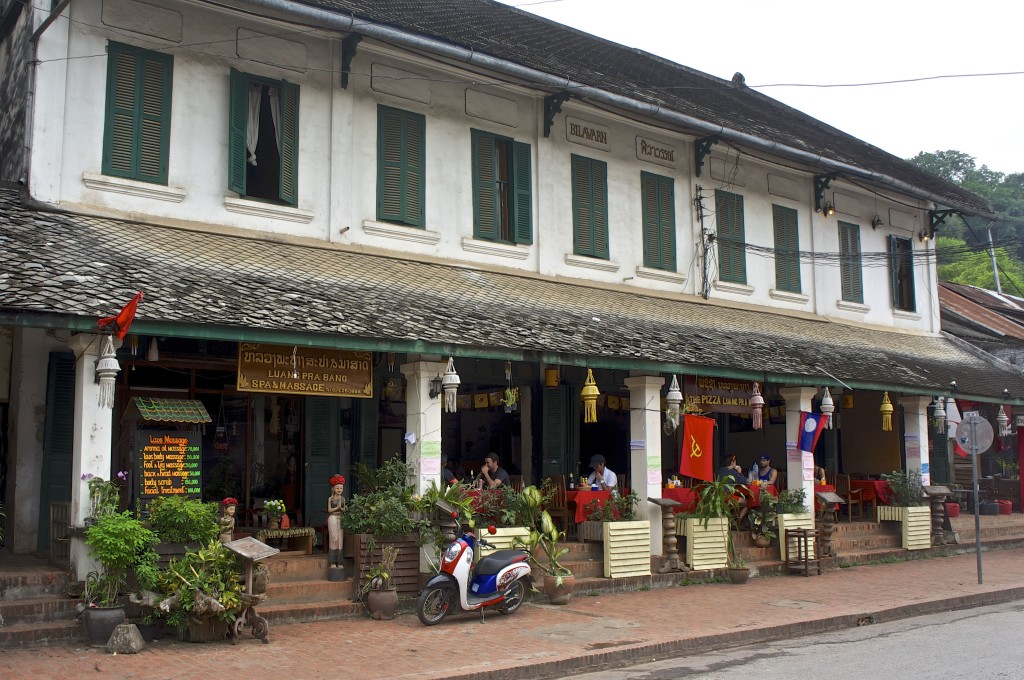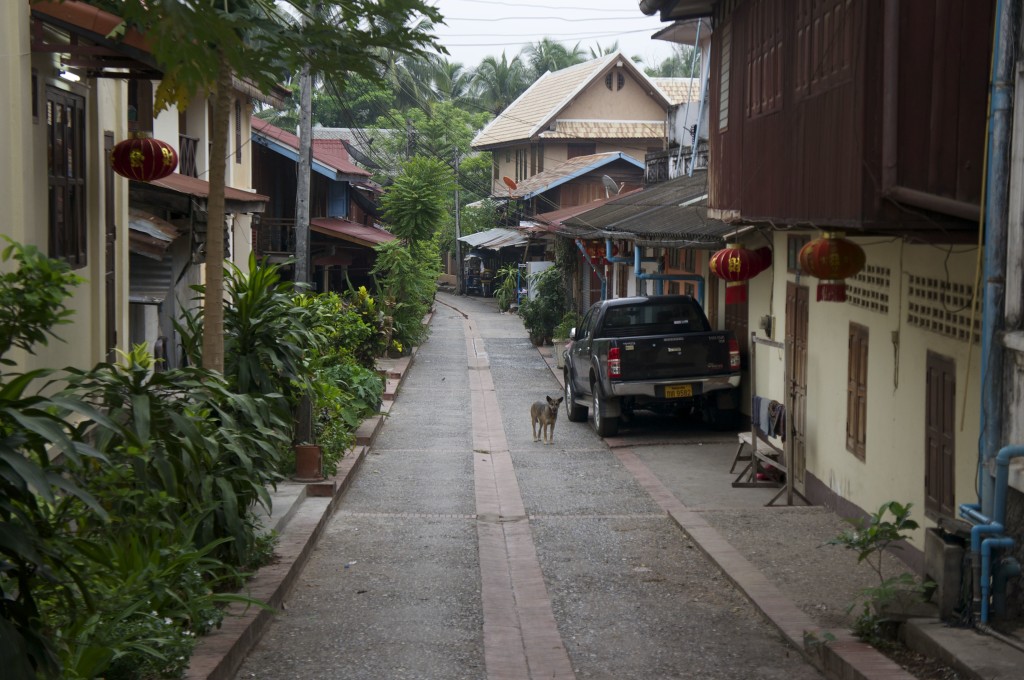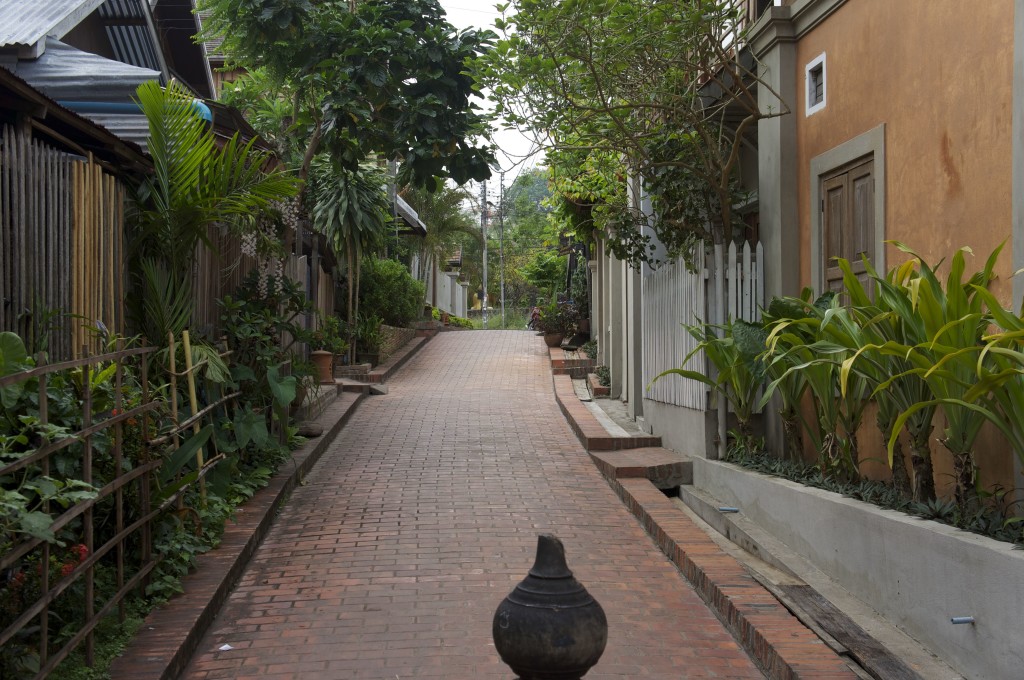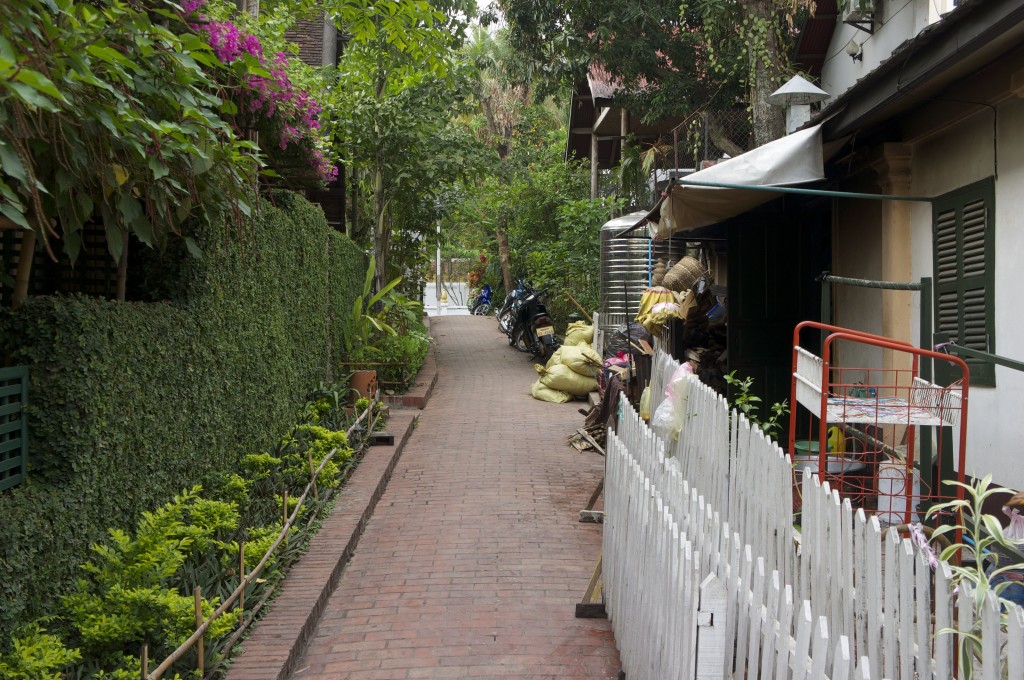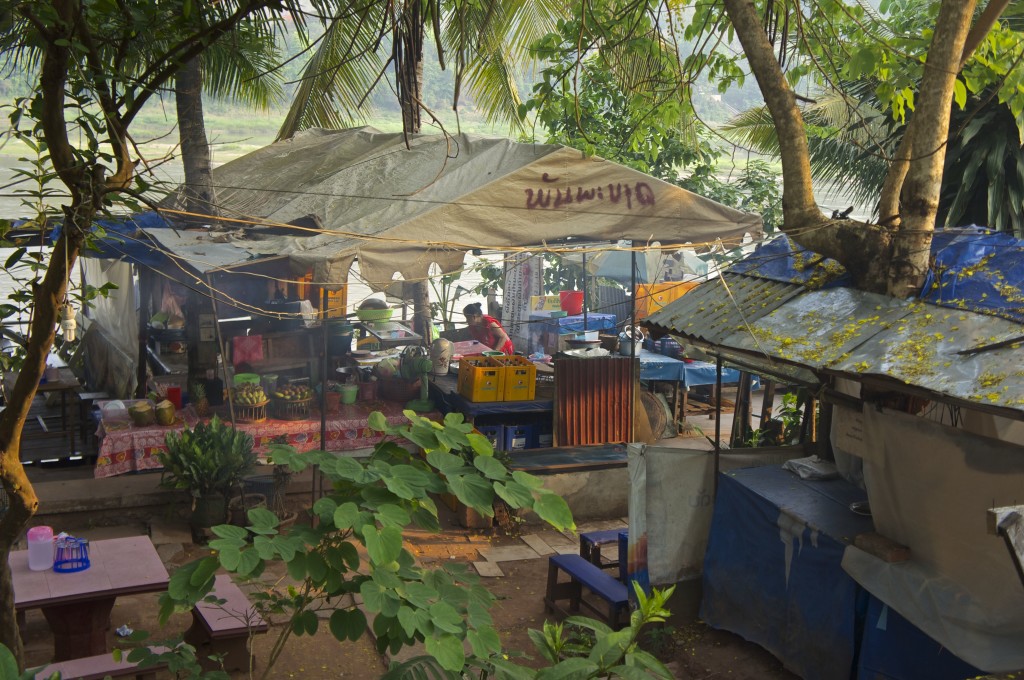Elephant unemployment is a real problem in Laos.
There used to be many, many elephants there — some say upwards of a million. Today there are about 1,600. Many of those that remain work in the logging industry, but now the logging industry is using trucks and other mechanized equipment to do their jobs. These elephants have not lived in the wild and thus cannot be turned loose. They become liabilities for the logging companies that own then, since it can cost $25 a day just to feed one. Sometimes they are killed. Often they are mistreated. And sometimes they are injured or killed by the land mines that are still buried in the Lao countryside from the days of the Vietnam War.
Elephant Village acquires those unemployed elephants, who are generally older animals in their 30s. Their website, which I’ve linked to here, has wonderful biographies of the elephants who live there, obviously written by people who know and love the animals.
Sometimes the orphanage purchases elephants; sometimes it leases them from the logging companies. (Who knew you could lease an elephant?) Its mission is to rescue and rehabilitate elephants. The people who work there seem strongly dedicated to what they do. There is a veterinary medic who works there full time; elephant veterinarians sometimes fly in from Thailand.
I was able to walk among the elephants, to touch them, to feed them, and even to play with them.
I felt very privileged to be there with such magnificent creatures. I was struck by how calm they were and how little noise they made when they walked. Their wrinkled skin makes them look older than they are. And maybe I am anthropomorphizing there, but their big expressive eyes seemed to contain a world-weary knowingness.
A few things about the orphanage troubled me — and let me make it clear that this is almost certainly more due to my ignorance than to anything else. One was that when the elephants were among us, they had chains that attached to one leg and to a tree or a post. I understand the reason for the chains, but the image was still disturbing. I also thought that the enclosure where I met Maxi, a one-year old baby who was born there last year, was pretty small for him and his mother, but again there are probably reasons for this that I don’t understand.
The biggest issue I had was that the orphanage gives tourists like me elephant rides. This is probably my most irrational concern, since carrying a few people is hardly a strain for animals who can carry much bigger loads. And what about all those horses I rode when I was younger? Yes, I understand that the orphanage needs tourist dollars to keep itself running and that rides are one way to generate those funds. And I also believe that jobs can be fulfilling to animals just as they can be to humans. But the idea of riding such intelligent, sensitive and endangered creatures seems demeaning to me — that is, it seems to demean the elephants, turning them into larger versions of the ponies that show up at kids’ birthday parties.
I wasn’t until I got there and saw all the orphanage’s operations that I decided to put my concerns aside and take a ride. Since rides are for two people (or two plus a child) and I was single, I was put with Anna, a lovely South African woman who works for L’Oreal in Thailand, and her three-year-old daughter, Mila. With the mahout (elephant caretaker/driver) riding on the elephant’s neck and giving commands via squeezes from his knees, we mounted up via a purpose-built platform. It was hard for me to escape the feeling that I was about to pitch forward into the mahout’s back, especially when our elephant walked down a steep hill, but I learned to live with that anxiety.
We walked down to the bank of the Nam Khan River — and then right into the river, which barely came up to our elephant’s chest. We crossed to the other side and stopped. The mahout asked me if I wanted to drive. I barely knew what I was agreeing to before he hopped off (an amazing feat in itself) and left me in charge of the elephant, Anna, and her daughter. Fortunately, the elephant knew the drill even if I didn’t, and we lumbered along at a slow pace while the mahout called incomprehensible instructions to me. At one point, though, we lurched to the left. I started to slip. I was riding bareback and there was nothing to grab onto — except Anna’s leg behind me. I immediately apologized and assured her I wasn’t being forward, just alarmed. She laughed and said that she’d been groped much worse. The mahout remounted, using the elephant’s trunk and ears as handholds, and we were off again.
After the ride, we fed our elephant, who dexterously took the banana bunches we offered her with her trunk and curled them into her mouth.
After lunch, we went to see the star of the orphanage, Maxi, the baby elephant. We took a longboat across the river to an island and there met him and his mother. Maxi is still nursing (which he will do until he is three). He never left his mother’s side, but he was definitely playful. He and I played the kind of tug games that you’d play with a puppy. Maxi would circle his trunk around my leg and pull me toward him. I would then try to pull away. I’d push him on his forehead and he’d push back. Every five minutes or so he suckled more milk from momma and then returned to the game. It was a lot of fun. And Mila, the three-year-old, was obviously entranced.
After that, we went swimming at the pool in the eco-lodge that adjoins the orphanage. This was the first real pool I’d been in in over a year (hot spring pools in China aren’t proper pools in my book). We then said our goodbyes to the elephants and headed back to town.


